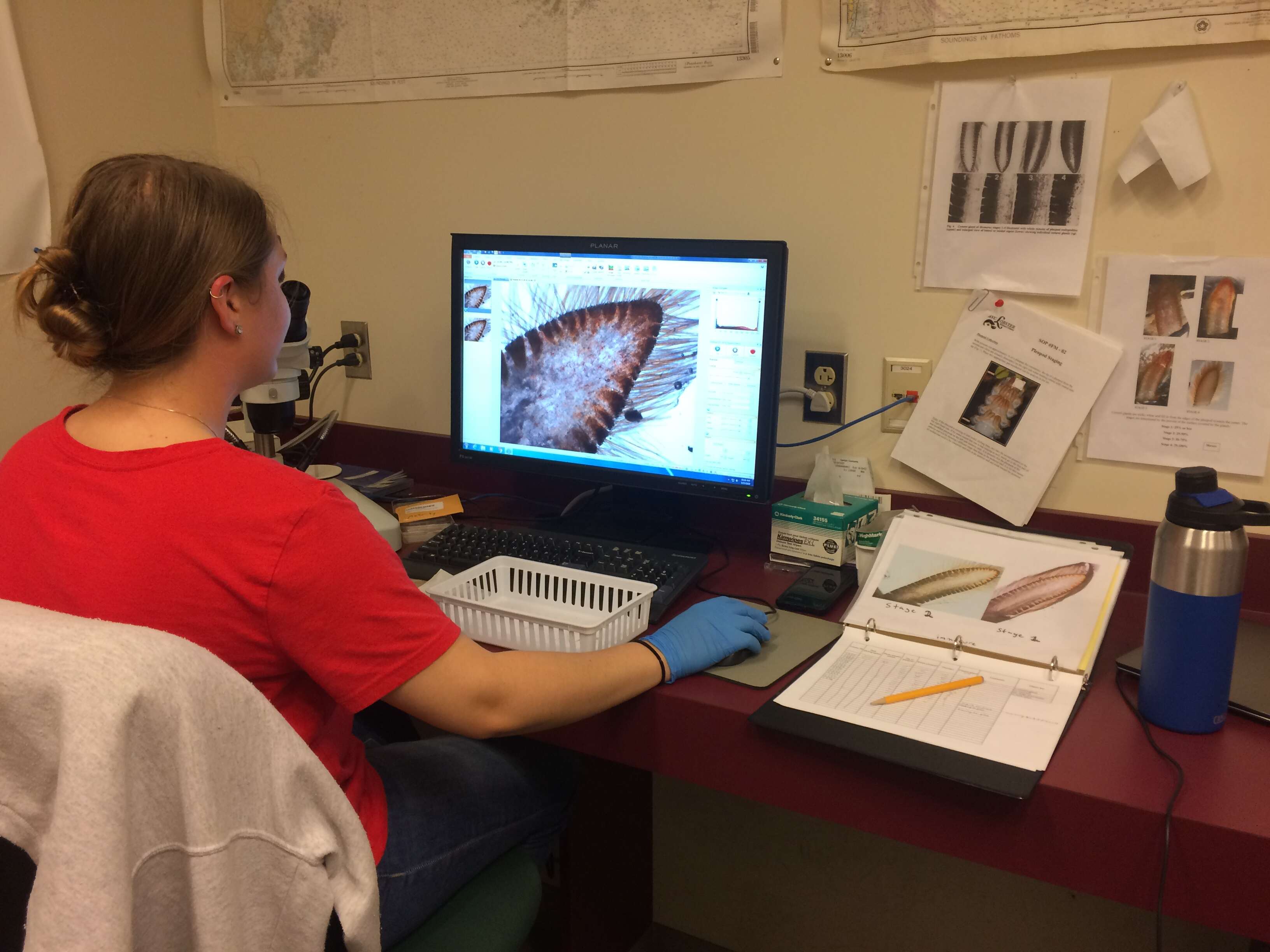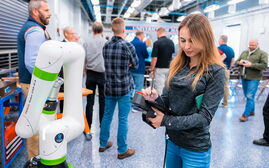
UMaine's 'hot water' study will examine lobster industry's vulnerable areas
Maine’s lobster fishery faces serious challenges related to climate change.
But a new research project at the University of Maine will develop indicators of resilience for the lobster industry that can be used to detect where the industry is most vulnerable to climate change.
The research will be led by UMaine in collaboration with the lobster industry, the Maine Department of Marine Resources, Maine Center for Coastal Fisheries and Maine Lobstermen's Association.
UMaine was awarded $125,808 for the project, called “Fishing in hot water: Defining sentinel indicators of resilience in the American lobster fishery,” by the Sea Grant American Lobster Initiative.
The initiative is funded by the National Oceanic and Atmospheric Administration’s National Sea Grant College Program.
New data for a critical resource
The lobster industry is among the most valuable commercial fisheries in the United States and supports thousands of jobs in coastal communities across Maine. The value of the Maine lobster catch was $485 million last year.
For the project, resilience is defined as “the ability of groups or communities to cope with external stresses and disturbances as a result of social, political and environmental change.”
The research team is using a process that includes the identification of variables that contribute to resilience and vulnerability in the industry. For example, one variable might be the number of fishing trips that are being taken in a given time period. A shift up or down could signal a change in the profitability of the fishery.
The focus of the work will be on near-real-time data streams: data that are generated on short time intervals such as daily, weekly or monthly.
This project aims to support state- and community-level management and planning. It also responds directly to the call for the creation of social metrics for the lobster fishery that is highlighted in the 2019 Review of the Atlantic States Marine Fisheries Commission Fishery Management Plan for American Lobster.
$2M funding, 9 projects
The project is one of nine awarded a total of $2 million this year, in support of the Sea Grant American Lobster Initiative.
Overall, the research will address gaps in knowledge about how American lobster is being impacted by environmental change in the Gulf of Maine, Georges Bank and southern New England.
The nine projects were chosen through a competitive process. The research competition solicited proposals aimed at addressing one or more of the following priorities:
• Increased understanding of life history parameters, including but not limited to, growth, maturity and species interactions;

• Larval ecology and early biology;
• Spatial distribution and migration, including but not limited to, habitat and trophic interactions;
• Socioecological investigations to inform future management decisions, including but not limited to, research exploring bait alternatives to herring and their implications for the lobster fishery.
In addition to “Fishing in hot water,” the other eight projects are as follows:
• Incorporating changes in thermal habitat and growth to improve the assessment of American lobster stocks and spatial distribution in the Gulf of Maine, Georges Bank and southern New England. The University of Maine will develop a modeling framework to help predict stock size and catch seasonally in future climate change scenarios.
• Testing and developing effective non-invasive female maturity assessment methods and protocols for the American lobster. Maine Department of Marine Resources will analyze samples collected during previous studies of lobster maturity. The goal is to develop methods that will allow researchers to understand how the size of mature lobsters may be changing as conditions in the Gulf of Maine change.
• Understanding and improving spatial distribution projections for lobster: Considering predation and building expert consensus. The Gulf of Maine Research Institute will examine existing models of lobster distribution and abundance, with the goal of guiding future model development that will account for changing environmental conditions.
• Understanding the cause of low dissolved oxygen in Cape Cod Bay and initiating a hypoxia warning system for the lobster fishery. Massachusetts Department of Fish and Game will study a 2019 hypoxic event — a measure of unfavorable oxygen concentration on the ocean’s bottom — in southern Cape Cod Bay, with the goal of improving the ability to forecast such conditions, thus enabling fishermen to make real-time decisions regarding their fishing operations.
• Assessing the broad-scale distribution and abundance of lobster larvae and their potential food sources throughout the Gulf of Maine and Georges Bank. The Atlantic Offshore Lobstermen’s Association will investigate the distribution and abundance of lobster larvae and their prey to better understand climate change impacts and inform future management strategies.
• Surface convergences: a critical pelagic microhabitat for American lobster postlarvae? Woods Hole Oceanographic Institution will study the “microhabitats” of lobster larvae in combination with environmental variability, in order to understand population dynamics of the lobster.
• Bait alternative development and future visioning in the New England lobster fishery. The University of Massachusetts/Amherst will explore bait alternatives to herring and the implications for the lobster fishery. The goal is to develop a bait alternative that liits negative impacts of the lobster industry on the Atlantic herring stock, reduces uncertain costs for lobster fishermen, and creates bait from seafood processing waste streams.
• Early life history of American lobsters in coastal southern New England waters. The University of Rhode Island will examine lobster larvae and juveniles in Rhode Island waters. The goal is to help rebuild the Southern New England lobster stock, which has a low lobster population.
U.S. landings of lobster are facing uncertainty this year, after a long period of increasing landings. The landing value of the fishery was estimated at $626.7 million in 2019 and represents one of the largest and most valuable fisheries along the Atlantic coast. In a 2018 report, lobster was the highest-valued species group in the nation.
In 2019, the National Sea Grant Office launched the American Lobster Initiative to support a national research competition and a Northeast Regional Lobster Extension Program. The extension program, designed to work with communities, is a four-year program that links lobster research with stakeholders who need and can use the results, including the lobster fishing industry and resource managers.













0 Comments